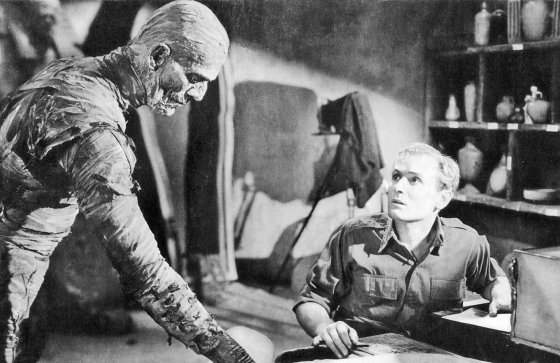When Man started to communicate, his conception of the physical world quite naturally became limited to what he was able to communicate. He thus became part of a new kind of “reality” as an individual, who could be called upon to act in a responsible, predictable way.
Behaviour, in short, became personality – or rather part of it, the residual turning into spirits and demons, especially that special kind of behaviour, which was involved in the establishment of a world that, being independent of the individual, now seemed external and pre-existent. Initially, this transition was looked upon with a certain amount of apprehension.

This in turn led to the instigation of religion as a way of relating to the forces underlying the conceptualization of the physical world. In time, however, even these vestiges of an understanding of the human condition turned into tall tales, and this mythology into literature.
It is of course not only recently that the supernatural has been associated with horror. Wherever religion failed, being increasingly more concerned with social regulation, the notion of supernatural beings quite naturally became disquieting, as well as fascinating – hence the popularity of the ghost story.
It gained prominence in the eighteenth century as “Gothic” horror. It is interesting to note that these gruesome tales were widely read and even written by women.
In other words, it would seem that the son of God taking a wife among the daughters of men had reverted to his true form after a century of masking as the brooding squire solaced by the feisty governess. It would take at least another century for the moral injunction against such unions to be lifted, the reason being that the incantation could now be rationalized as formula, and the journey to the underworld as a new Age of Exploration.
However popular these genres – horror and science fiction – may have been with the public, they never gained the approval of critics (whose job, after all, is to denounce such threats to the public order). Instead they became the province of pulp magazines and THE MOVIES.
The moving pictures being one of the technical wonders of the promising twentieth century, it was only natural that it should primarily concern itself with the consequences of electrical machines taking over and making manual labour a thing of the past. Consequently the main issues of these short, mostly humorous treatises were those two great threats to the future of mankind: idleness and women’s suffrage.
Science fiction can thus be said to be a generation older than horror, the latter growing out of the German Expressionist movement in the twenties. To these artists, rebelling against an arid realism tending to leave Man out of the equation, the dreamlike experience of the cinema presented a welcome opportunity.
They did not, however, agree well with the Nazis, and so many directors preferred the rapidly growing Hollywood money-making machine to the restrictions of the progressive state. It was due to the visual sense of these immigrants, when applied to the American barnstorming tradition, that the horror movie was born.
For more than a decade, the creatures of the night would swamp the cinemas, in many ways the most popular genre of all. Then along came World War II, presenting new prospects of technical advancement, bombs and rockets.
For a while the question whether Man would travel into space or annihilate himself in a nuclear war seemed more pressing than the monsters of the Id. Still, you can’t keep a good monster down!
In the sixties Hammer resurrected and re-resurrected not only the creation of Frankenstein, but the vampire and werewolf as well. This, however, was also the time, when critics were beginning to take the movies seriously.
Consequently, they had to grow up, producing “realistic” horror like THE EXORCIST. Finally, when the interest for these blockbusters waned, the genre was dead, leaving only kiddie shows like STAR WARS and HARRY POTTER and torture porn.
This, of course, is the main reason why this film history goes no further than 1979 – another being that this is all that would fit into a single-volume handbook. Finally, most readers will probably already be familiar with most of the instalments of FRIDAY THE 13TH.
There are, I hope, at least two ways, in which this book will be useful to the reader. He may read it from cover to cover as a comprehensive history of these genres, or he may use it as a guide.
Not more than a decade ago, you would only be familiar with most of these movies, if you had seen them at their release. Now, however, virtually all of them can be found on DVD (or downloaded from the Internet, if you should contemplate a life of crime).
Looking these often cryptic titles up in the extensive index and reading about them in the book should at least give you an idea of which ones might be worth your trouble or money, even if you don’t necessarily share the opinion of the author. So why bother?
If “dreams are the royal road to the unconscious” as claimed by the psychoanalysts, these are the collective dreams of our culture – dreams of a physical reality, which now seems “supernatural”, fanciful and frightening, a mysterious past projected into a future, where such things may again be part of human experience. Mainstream art having once more reverted to aping a dismal “reality”, there is currently no better way to spend your evenings.


